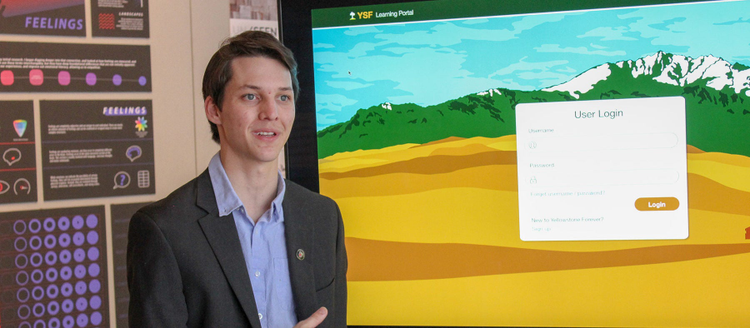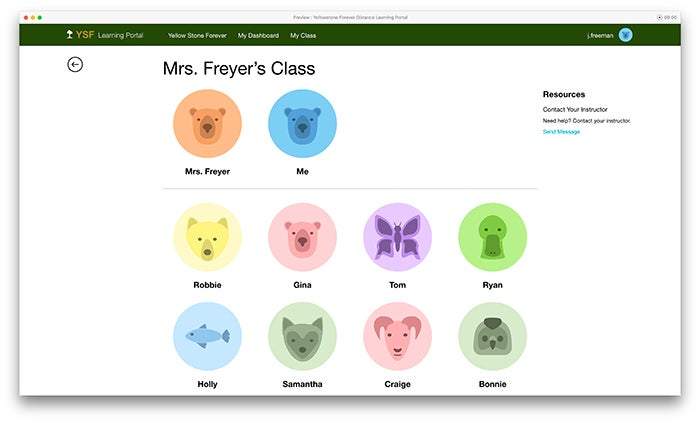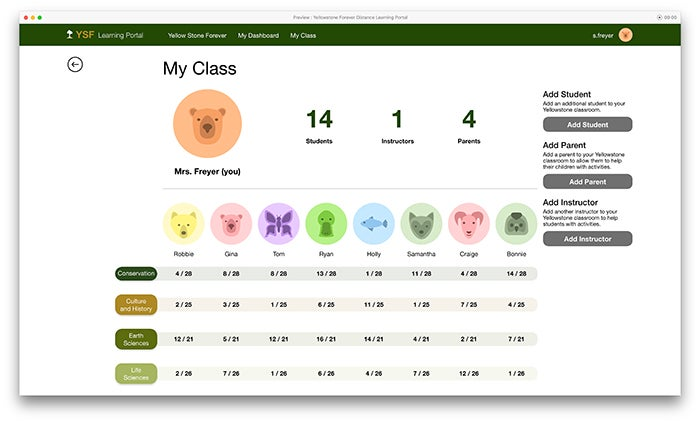Using Design to Introduce Yellowstone to the World Through Distance Learning

University of Utah student Steven Calhoun demonstrates the user flow of his project, the Yellowstone Forever Learning Portal, created in Adobe XD.
The University of Utah is well situated to access spectacular nature. Right beside mountains and not far from the salt flats, design students are spoilt for choice of where to get some real world, natural inspiration. In this year’s Field Studio course, part of the University of Utah’s innovative Multi-Disciplinary Design Program, students were tasked with finding unique design solutions for some of Yellowstone National Park’s key problems, using Adobe XD. For Steven Calhoun, who admits he is one of the lucky ones who could easily access mountains and nature throughout his life, using digital products to improve distance education for those who can’t always experience nature was a passion he turned into his project.
“Just going to the park and experiencing what can be translated through a digital medium made me see that there was a discrepancy between the values you get from visiting the park, versus just looking at a Bison on a computer screen,” he said.

Steven Calhoun’s Yellowstone Forever Learning Portal provides a fun and functional way for young students to interact with each other and their teachers over Yellowstone’s educational materials.
“I approached distance learning with a different intent. I wanted students to contextualize and relate to information.”
Rethinking the distance education user flow
Steven knew that, when it came to gaining and keeping the attention of young students, user flow in his Field Studio project was very important. He created the Yellowstone Forever Learning Portal to be highly personalized and gamified for the individual student. He also knew it was essential to provide teachers with oversight, creating a companion digital experience just for educators to track and interact with their students.
_“_Adobe XD allowed me to just map out the user flows, and try to figure out the exact experience that I wanted within this web platform,” said Steven.

By making content personalized, gamified, and visually appealing, Steven has envisioned a fresh approach for children participating in Yellowstone’s distance education.
Key to the learning of the design process at University of Utah, Steven conducted a fair amount of real life research before and during production of the prototype, testing the portal with users (both children and educators), using XD’s collaboration features. It was this testing phase that taught him how important user experience design is.
“XD was a really good tool to be able to understand user interactions, and how students would actually be moving through this material as users, and not just as an overarching framework of educational material,” he said.
Steven has a background in fine arts. While he greatly appreciated digital design, he wasn’t sure he would be able to successfully break into it, since he was more used to physically creating. During the Field Studio course, he learned to fully embrace his love of digital product design and the power of digital experiences to make a difference. Read more about Steven’s evolution from fine artist to digital designer, and how UX design taught him the power of creating, testing, and iterating to create solutions that have a major impact on people and organizations that need help.
If you missed any of our collection or articles, Doing Good with Design Education in partnership with the University of Utah, check out the others below.
- PART 1: How the University of Utah and Yellowstone National Park Are Fostering the Next Generation of Design Leaders
- PART 3: Using Design to Redefine Wild and Take a Fresh Approach to Fundraising
- PART 4: How University of Utah Students Evolve Along with their Design Process
- PART 5: Unlocking Careers and the Potential to Impact Yellowstone for Years to Come
Adobe Creative Cloud can empower students to think creatively and turn their classroom ideas into college and career opportunities. To learn more, visit the Creative Cloud for Education homepage.